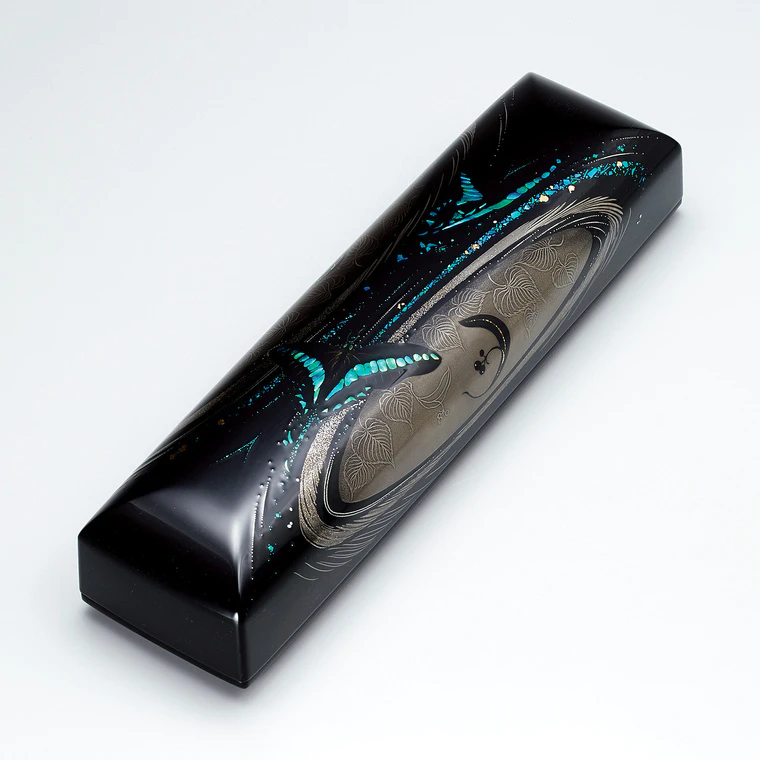Box with design in makie. “Merciful light”
H 8.0 x W 10.5 x D 40.2 cm,Year.2014- according to today's currency rate
- shipping fees not included
Keiji Onihira
1973 -- Lacquerware
- Price Range Please Inquire
- Awards at Japan Kōgei Assoc. Exhibitions : 4
About the Artwork
Maki-e box "Mihikari" was made with the image of a common bluebottle's beautiful blue wings and the sight of it flying swiftly. I drew butterflies that are said to be symbols of reincarnation of spirits, and on the side, the fruit and flower of a Bo tree, also known as the tree of the Budha, where the Budha was spiritually awakened. Seashells are used for the butterfly and mainly silver-palladium alloy for the Bo tree.
Mihikari means "Nurturing all creations and blessing the world", and the Chinese character expressing "Mi" means, "loving,caring and gracious". My benefactor passed away when I was making this, and so I put my thoughts into this piece wishing that he will watch over us from above.
Description
-
CategoryLacquerware
-
MaterialsUrushi lacquer, Hemp cloth, South sea abalone shell (tamamushi shell), Gold powder, Pigments, Silver-palladium alloy, Gold
-
DimensionsH 8.0 x W 10.5 x D 40.2 cm
-
Year presented2014
-
RarityUnique
Techniques Used
Dry lacquer
For works of dry lacquer (kanshitsu), first a clay form is created and plaster is used to take a mold of the form. Next, repeated layers of hemp cloth and lacquer are applied to the mold until they are built up to the desired thickness. Finally, the mold is removed and additional coats of lacquer are applied to finish the piece. The hemp fibers are strengthened when the lacquer bonds with them, making dry lacquer an excellent technique for creating sturdy forms with a significant degree of freedom.
Maki-e
Maki-e (literally “sprinkled pictures”) is a representative lacquerware technique that originated in Japan around 1,200 years ago. Maki-e is done by painting lacquer motifs on the surface of a piece using a fine brush and then sprinkling gold powder onto the lacquer before it hardens, producing luxurious decorations.
Mother-of-pearl inlay (Raden)
Mother-of-pearl inlay (Raden) is a decorative technique that uses the iridescent inner layer of abalone shell, turban shell, pearl oyster shell, or other mollusk shells. The technique came to Japan from China 1,300 years ago, and pieces featuring mother-of-pearl inlay are included among the artifacts at the Shōsōin Repository in Nara.
Selected exhibitions
- The 61st Japan Traditional Kogei Exhibition (2014)
- Selected

